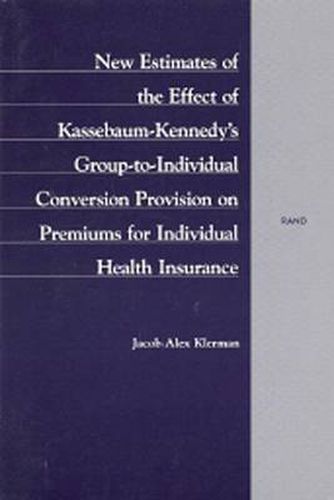Readings Newsletter
Become a Readings Member to make your shopping experience even easier.
Sign in or sign up for free!
You’re not far away from qualifying for FREE standard shipping within Australia
You’ve qualified for FREE standard shipping within Australia
The cart is loading…






Using new tabulations from the Survey of Income and Program Participation and newly released data from the Current Population Survey, this report reexamines the likely effect on insurance premiums in the individual health insurance market of the Health Insurance Act of 1995 (commonly known as Kassebaum-Kennedy ). A widely cited study by the Health Insurance Association of America (HIAA) estimates that the proposed legislation would increase premiums for those currently buying individual health insurance by over twenty percent. This study estimates a range of effects from 5.5 percent to under one percent. The upper end of the range maintains the HIAA assumptions, but substitutes new tabulations of the figures used in the computation of the estimate. The lower end of the range considers the interaction of the proposed federal legislation and current state insurance regulations.
$9.00 standard shipping within Australia
FREE standard shipping within Australia for orders over $100.00
Express & International shipping calculated at checkout
Using new tabulations from the Survey of Income and Program Participation and newly released data from the Current Population Survey, this report reexamines the likely effect on insurance premiums in the individual health insurance market of the Health Insurance Act of 1995 (commonly known as Kassebaum-Kennedy ). A widely cited study by the Health Insurance Association of America (HIAA) estimates that the proposed legislation would increase premiums for those currently buying individual health insurance by over twenty percent. This study estimates a range of effects from 5.5 percent to under one percent. The upper end of the range maintains the HIAA assumptions, but substitutes new tabulations of the figures used in the computation of the estimate. The lower end of the range considers the interaction of the proposed federal legislation and current state insurance regulations.